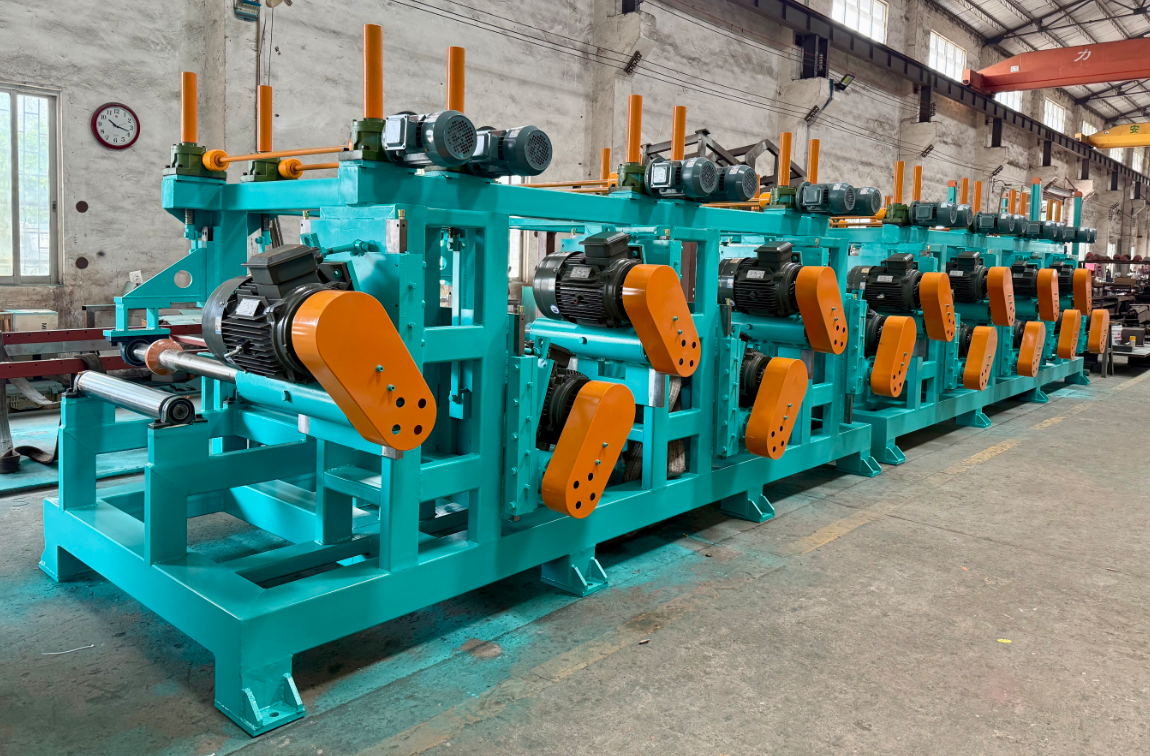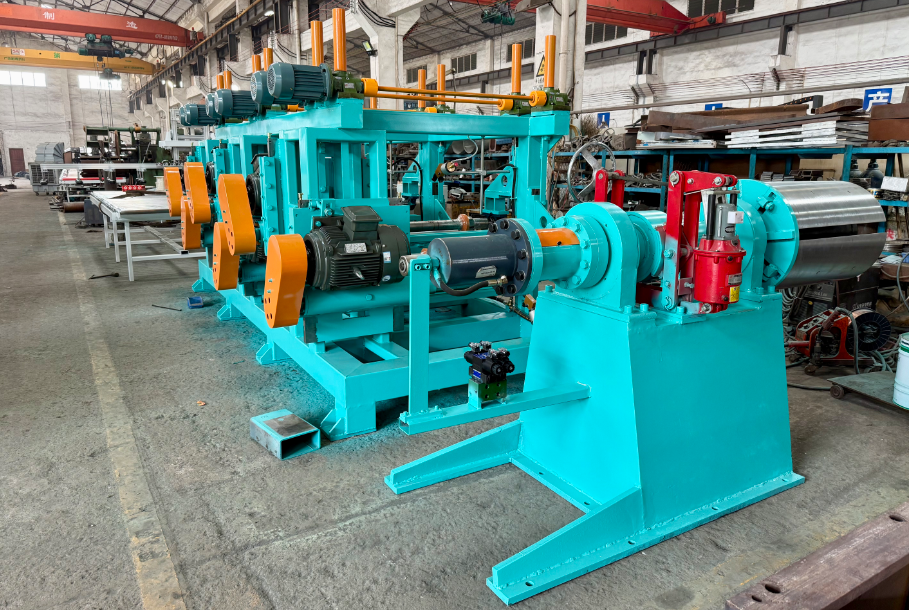How to Use a Pipe Inside Polishing Machine for Best Results?
To get the best results with a pipe inside polishing machine, you need to start with a clean surface. Use the right tools for your pipe material. In industries like food processing and pharmaceuticals, there are rules to follow. Standards like EHEDG and ASME BPE want smooth, polished insides. This helps stop contamination and makes cleaning easy. Always use high-quality stainless steel. Do not use rough surfaces. Follow strict sanitation rules. Groups like the FDA and USDA make these guidelines. They help keep products safe and good quality.
Key Takeaways
- Always begin with a clean pipe surface. Use the right tools and cleaners. This helps make the polish smooth. It also stops damage from happening.
- Pick the correct polishing machine attachments. Change the speed for the pipe’s material and size. This gives you the best finish.
- Hold the pipe tightly before you start polishing. This stops the pipe from moving. It helps you get an even, shiny surface.
- Use a multi-step polishing process. Start with coarse pads and compounds. Then use fine pads and compounds. This makes the pipe smooth and shiny like a mirror.
- Wear the right safety gear. Take care of your machine often. This keeps you safe and helps the machine last longer.

Preparation
Tools and Materials
Get all your tools and materials before you start. The right equipment keeps you safe and helps you work faster. Here is a list to help you:
- Pipe inside polishing machine
- Wire brushes or metal brushes
- Cylinder hones
- Polishing cloths and microfiber cloths
- Abrasive pastes and polishing compounds
- Chemical cleaners (like PTX Lime powder)
- Hydro-jetting equipment (for heavy debris)
- Personal protective equipment (PPE) such as gloves, goggles, and masks
Tip: Use a new polishing belt and compound for each step. This stops mixing and helps you get a smooth finish.
You might need special cleaners or tools for different pipes. Stainless steel pipes often need pickling chemicals. Copper pipes can be cleaned with baking soda or vinegar from home.
Pipe Cleaning
Cleaning the pipe first is very important. If you skip this, dirt can mess up your work. Start by brushing off loose dirt with a wire brush or hydro-jetting equipment. For rust or tough stains, use chemical cleaners or home items like baking soda, vinegar, or lemon juice paste. After using these, scrub the pipe with steel wool or a metal brush.
Pickling is good for stainless steel pipes. This chemical step takes away rust and dirt, making the pipe ready for polishing. For copper pipes, use vinegar or store-bought rust removers. Always rinse the pipe well after cleaning to wash off any chemicals. If you leave cleaners on the pipe, they can mess up the polishing and make the finish worse.
The kind of pipe you have changes how you clean and polish it. Mechanical polishing works for aluminum, copper, and stainless steel. Chemical polishing is best for metals that are hard to polish by hand. Electropolishing is great for tricky shapes and gives stainless steel a shiny look.
Machine Setup
Assembling the Machine
First, put your pipe inside polishing machine on a flat table. Make sure the power is turned off before you start. Look at the manual for your machine model. Some machines have different steps, but most are alike. Attach the main polishing part to the base. Tighten all bolts and fasteners so nothing is loose. If your machine has a dust collector, hook it up now. This helps keep your work area clean and safe.
Tip: Pick a machine size that fits your pipe. Big machines can polish large pipes but cost more money. Small machines are good for tight spots and cost less.
Most machines can polish round, square, or rectangle pipes. You can use them for stainless steel, aluminum, copper, or brass pipes. This lets you do many jobs with one tool.
Adjusting Attachments
Pick the right polishing attachment for your pipe. The attachment you need depends on the pipe’s material and size. Use abrasive belts or grinding wheels for steel pipes. Use polishing belts or wheels to make the pipe shiny and smooth. Many machines let you change the speed and swap attachments for different pipe sizes.
Here is a quick guide:
|
Polishing Attachment Type |
Suitable Pipe Material |
Suitable Pipe Size/Feature |
Key Features/Notes |
|
Abrasive belts and grinding wheels |
Steel weldbutt pipes |
Various pipe diameters (adjustable) |
Good for grinding inner surfaces; adjustable speed and attachments |
|
Polishing belts and polishing wheels |
Steel pipes |
Various pipe diameters (adjustable) |
Use after grinding for a smooth, shiny finish; adjustable speed and attachments |
- Use muslin buffs for fine polishing. Coarse-weave buffs work with rough compounds. Fine-weave buffs make the pipe glossy.
- For small pipes, use a buffer with variable speed for better control.
- Always clean the pipe and attachment before using a finer compound. This stops scratches.
Note: Do not use high-speed rotary tools like Dremel for pipe polishing. They can hurt the pipe and make you lose control.
If you want to buy a machine, check prices and features. Automatic machines cost more but save time and work. Look for things like variable speed and dust collectors. These features make your job easier and safer.
Using a Pipe Inside Polishing Machine
Securing the Pipe
You need to secure the pipe before you start polishing. This step keeps the pipe steady and helps you get a smooth finish. Follow these steps for best results:
- Cut the pipe ends square using a guide. This gives you a flat surface and helps the pipe fit tightly in the machine.
- Remove sharp edges by deburring the pipe. Use a file or deburring tool. This stops small pieces from breaking off during polishing.
- Chamfer the outside edges at a 10-15 degree angle. This makes it easier to fit the pipe into the machine and keeps it from slipping.
- Clean the pipe surface. Wipe away dirt, grease, or oil. A clean pipe stays in place better and polishes more evenly.
- Choose the right clamp or fixture for your pipe’s size and material. Use thicker, stronger clamps for large pipes. For small or delicate pipes, use soft jaws or rubber pads to avoid damage.
- Adjust the machine’s fixtures so the pipe fits snugly. Make sure the pipe cannot move or spin during polishing.
Tip: Always check that the safety covers and emergency stop buttons work before you start the pipe inside polishing machine.
Polishing Process
Once you secure the pipe, you can begin polishing. The steps below help you get a uniform, shiny finish:
- Pick the right polishing pad or wheel. Wool, foam, or microfiber pads work for different finishes. Use coarse pads first, then switch to finer ones for a glossy look.
- Apply a small amount of polishing compound to the pad. Do not use too much. Too much compound can make a mess and slow down your work.
- Set the machine speed. Use a slower speed for small or thin pipes. Use a higher speed for larger, thicker pipes. Adjustable speed settings help you match the process to the pipe’s material and size.
- Start the pipe inside polishing machine. Move the pad slowly and evenly inside the pipe. Use overlapping motions. Do not stay in one spot for too long. This prevents heat buildup and keeps the finish even.
- Stop the machine every few minutes. Wipe away extra compound and check your progress. Look for scratches or dull spots. If you see any, adjust the pressure or change the pad.
- Repeat the process with finer pads and compounds. Multi-pass polishing, where you use several pads from coarse to fine, gives you a smoother, mirror-like finish. This method works better than single-pass polishing, which may leave marks or need extra manual work.
- For small or delicate pipes, you can polish by hand. Use a soft cloth and a gentle polishing paste. Rub in small circles until the surface shines.
Note: Multi-pass polishing with a pipe inside polishing machine gives you a more even and shiny finish than single-pass methods. It also saves time and reduces mistakes.
Inspection and Cleaning
After polishing, you need to check your work and clean the pipe. This step keeps your pipes looking good and working well.
- Inspect the inside of the pipe. Use a flashlight or inspection camera. Look for scratches, dull spots, or leftover compound. The surface should look smooth and shiny.
- If you find rough spots, polish them again with a fine pad and a small amount of compound.
- Clean out all polishing residue. Use a brush or air blower to remove dust and loose particles. For a deeper clean, flush the pipe with water or use a chemical cleaner like a degreaser or pickling solution. This removes any leftover compound and helps prevent rust.
- For tough residue, try pigging (pushing a cleaning plug through the pipe) or use a combination of mechanical brushing and chemical cleaning. This makes sure the inside of the pipe is spotless and ready for use.
Tip: Always dry the pipe completely after cleaning. Water left inside can cause rust or spots, especially on metal pipes.
By following these steps, you can use a pipe inside polishing machine to get a smooth, clean, and shiny pipe interior every time.

Safety and Maintenance
Safety Tips
You need to stay safe when using a pipe inside polishing machine. There are many dangers if you do not follow safety steps. Here are some easy safety tips:
- Wear thick gloves and aprons. This keeps your skin safe from sharp bits.
- Put on safety shoes. These protect your feet when you move heavy pipes.
- Always use eye and face shields. Tiny dust and metal pieces can hurt your eyes.
- Wear a dust mask or respirator. This stops you from breathing in bad dust or chemicals.
- Use ear protection. The machine can be very loud and hurt your ears.
- Make sure your work area has fresh air. Use dust collectors and HEPA filters to clean the air.
- Never use cleaners with dangerous stuff like silica, iron oxides, cadmium, or lead. These can make you very sick.
- Keep the polishing area away from other work spots. This keeps others safe.
Tip: Check your safety gear before you start. Get new gear if yours is broken or old.
Machine Care
Taking care of your pipe inside polishing machine helps it last longer. It also helps it work better. Do these things:
- Clean the machine after you use it. Wipe off dust and leftover polish.
- Look at belts, wheels, and pads. Change them if they look worn out.
- Oil moving parts as the manual says.
- Make sure dust collectors and vents work well.
- Keep the machine in a dry place. This stops rust.
Pipe Maintenance
After you polish, you need to keep your pipes clean and strong. Here are some ways to do that:
- Rinse pipes well to wash off any leftover chemicals or polish.
- Dry pipes all the way. This stops rust and water spots.
- Try to use water-based polish. These are safer for you and the earth.
- Do not use strong chemicals that can hurt the pipe or your health.
- Check pipes often for rust, damage, or buildup.
Some people forget to wear safety gear, use the wrong polish, or skip cleaning the machine. Do not make these mistakes. This keeps you and your tools safe.
You can get great results if you follow clear steps for pipe inside polishing. Begin by getting ready and cleaning the pipe well. Pick the right machine settings and attachments for your pipe. Always wear safety gear and take care of your tools. This helps the pipe surface look better and last longer. It also keeps pipes safe from rust. For special pipes like titanium or high-nickel alloys, try electropolishing, ultrasonic polishing, or diamond polishing. These ways help you follow tough rules and make your pipes last longer.
FAQ
How often should you clean your pipe inside polishing machine?
You should clean your machine after every use. This keeps it working well and helps it last longer. Wipe off dust and polish. Check for worn parts before you use it again.
Can you polish pipes made of plastic or PVC?
You can polish plastic or PVC pipes, but use a soft pad and low speed. Hard pads or high speed can melt or scratch the pipe. Always test on a small area first.
What should you do if the pipe gets stuck in the machine?
- Turn off the machine right away.
- Wear gloves before touching the pipe.
- Gently wiggle the pipe free.
- Check for damage before starting again.
Which polishing compound works best for stainless steel pipes?
Use a compound made for stainless steel. Green or white polishing compounds work well. These give a shiny finish and remove small scratches. Always read the label before you use any compound.

